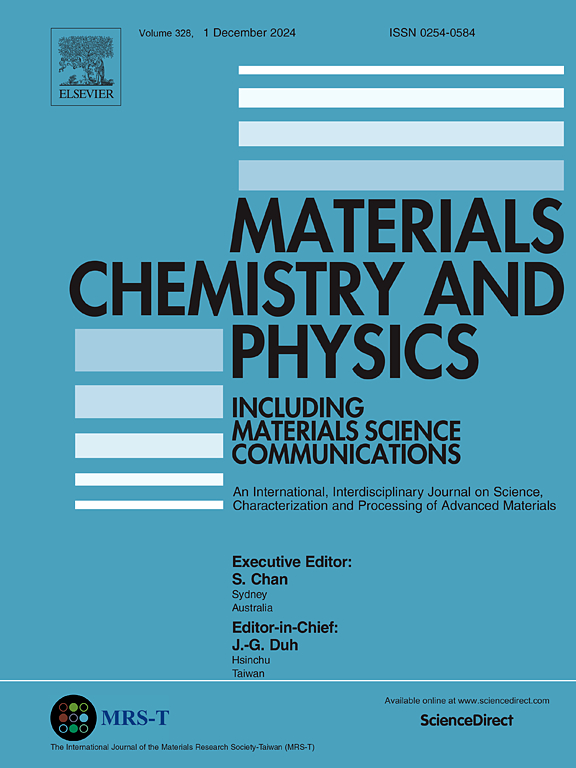Structural and bandgap tuning of self-supported Zn–NiS thin nano-sheets as efficient supercapacitor electrode material
IF 4.3
3区 材料科学
Q2 MATERIALS SCIENCE, MULTIDISCIPLINARY
引用次数: 0
Abstract
Doping based induced defects and morphology tuning in nickel sulfide plays a crucial role for performance improvement and stability. So, in pursuit of high-performance supercapacitors, the morphology and conductivity of nickel sulfide (NiS) nano-sheets have been tailored through strategic doping with transition metal zinc (Zn). The Zn incorporation in NiS induced structural and electrochemical changes with varying doping concentrations of 1 %, 3 % and 5 % (total weight of host material) named as NiZn1S, NiZn3S and NiZn5S respectively. The morphological, chemical, structural, compositional and optical results of SEM, TEM, HRTEM, EDS, XRD, FTIR, PL and UV revealed NiZn3S to be the best as its nano-sheets like morphology has offered high active surface area which ultimately increases the electrochemical performance as well as stability. The supreme specific capacitance of NiZn3S recorded 1322 Fg_1 at 1 Ag_1 with splendid cyclic retention of 94 % after 5000th cycles. NiZn3S exhibited both charge storage mechanisms with 29 % capacitive controlled and 71 % diffusive controlled contribution ratio at 5 mVs_1. The power law (b = 0.67) and pseudocapacitive behavior dominated by observing increased trend in capacitive (surface) contribution ratio with increased scan rate proves its suitability for supercapacitors.
求助全文
约1分钟内获得全文
求助全文
来源期刊

Materials Chemistry and Physics
工程技术-材料科学:综合
CiteScore
8.70
自引率
4.30%
发文量
1515
审稿时长
69 days
期刊介绍:
Materials Chemistry and Physics is devoted to short communications, full-length research papers and feature articles on interrelationships among structure, properties, processing and performance of materials. The Editors welcome manuscripts on thin films, surface and interface science, materials degradation and reliability, metallurgy, semiconductors and optoelectronic materials, fine ceramics, magnetics, superconductors, specialty polymers, nano-materials and composite materials.
 求助内容:
求助内容: 应助结果提醒方式:
应助结果提醒方式:


